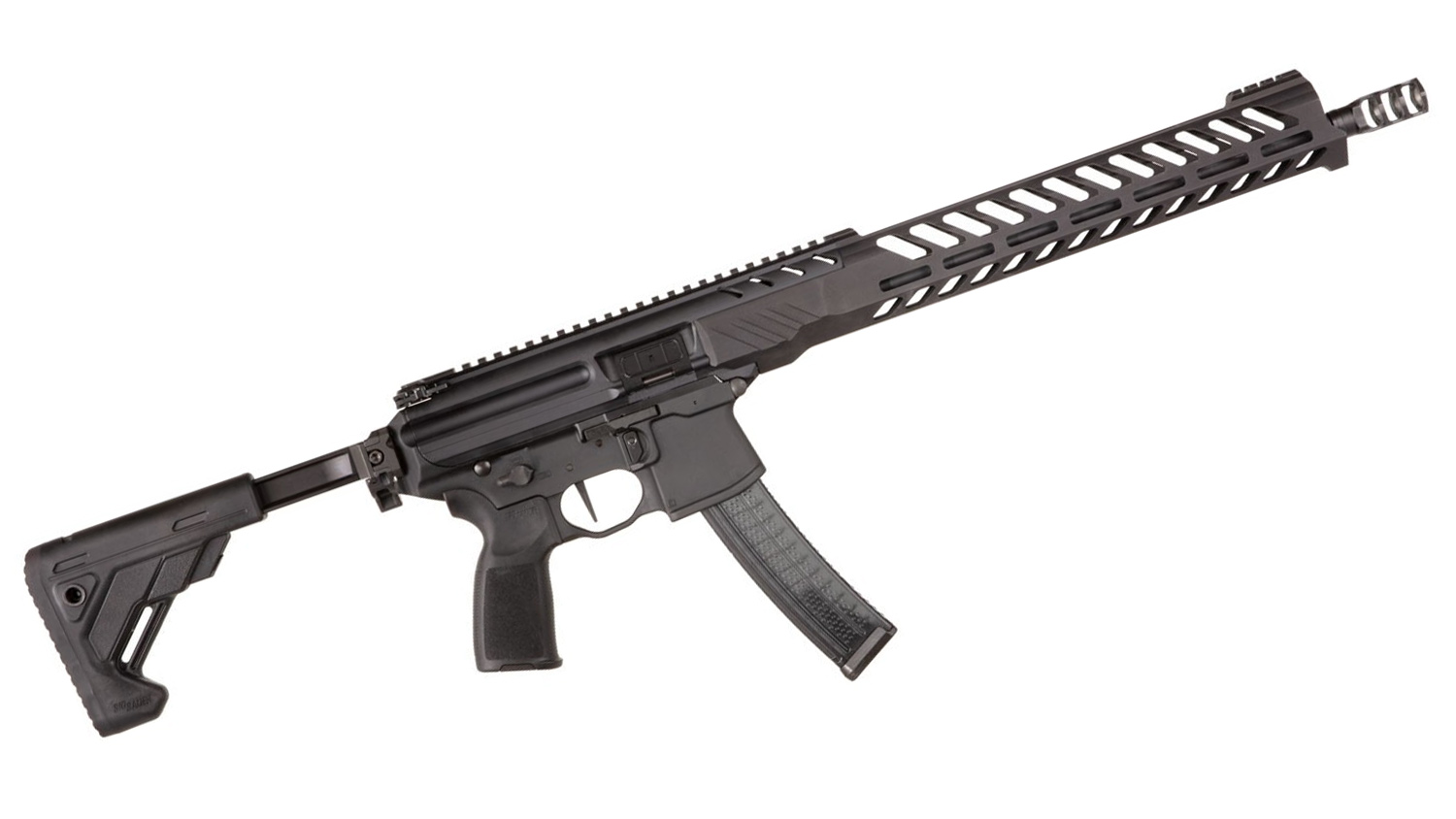
When USPSA opened competition to pistol caliber carbines (PCC) in 2016 there were some who opined that the inclusion of long guns had no place in a handgun discipline. However, it was quickly pointed out that USPSA stands for United States Practical Shooting Association and practical shooting covers more than just handguns.
The decision to include PCC made sense, given that they were becoming very popular for home defense, military and law enforcement use. The inclusion of PCC was not much different than the realization that reflex sights mounted onto the slides of semi-automatic handguns were becoming a thing, which had prompted USPSA to incorporate the Carry Optics division just two years prior.

The equipment rules for the new PCC division allowed any pistol caliber cartridge, but regardless of the caliber used scoring would be at 125 PF Minor. There was no limit on magazine capacity, and optical, electronic and laser sights were allowed.
As with any new competitive division there was a shaking-out period where shooters experimented with their gear to find what worked best for them. With PCC, however, it didn’t seem to take very long. When one looks at the equipment survey figures from the 2018 USPSA National Championship and compares them to those shooters who choose to fill out the equipment survey form at the 2019 National Championship (as reported in the Jan./Feb. 2020 issue of USPSA’s FrontSight magazine), there are many familiar names—along with a few new ones.
Guns
Among those responding to the survey, the most popular factory PCC was the same blow back operated JP GMR-15 that occupied that position in 2018, with a whopping 37 percent of the shooters choosing it. The gas piston SIG Sauer MPX was next at 26 percent—the same position it held in 2018. The rotating bolt MBX Extreme was the third most popular at 8 percent—a slight increase over the previous year.

While factory guns were the most popular choice, at least 8 percent of the competitors chose to build their own. That is not a difficult proposition. One can buy a lower receiver, and add the required upper unit parts. Or, if the shooter already has a mil-spec AR-15 receiver they need do little more than add the appropriate magazine block adapter to allow the use of Colt-patterned 9mm magazines, and then slap on a 9mm upper unit of their choice. JP Enterprises was the most popular choice for those shooters seeking the hardware to create their own builds, with Magpul the most popular supplier of buttstocks.
Sights
Red-dot sights are key components in the PCC shooting system. As in 2018, C-More was the most popular model with 19 percent choosing the Railway, and 12 percent using the RTS2. The Holosun 510C was the next most popular choice at around 22 percent. The Trijicon MRO, introduced in 2018, was chosen by 15 percent of the shooters. The Vortex Venom was next at 10 percent with Leupold’s DeltaPoint Pro following behind closely at 9 percent.

Loads
Given that PCC division is scored Minor, regardless of caliber, it’s not surprising that the 9mm cartridge was the universal choice. Not only is it one of the most inexpensive centerfire rounds, but the diminutive cartridge allows for more rounds in the magazine.
It’s also not surprising that 66 percent of the shooters choose to handload their ammunition. The 16-inch (or more) barrel on a PCC will increase velocity about 150 to 200 FPS over the same load fired from a five-inch handgun barrel. Careful adjustment of the operating springs on a PCC can allow shooters to use some truly “Mouse Puff” loads that will make the 125 PF from their PCC that wouldn’t make it from a handgun.
The most popular bullet weight, whether for those handloading or shooting factory fodder, were 124 and 125 grains at 35 percent. The 115 weight was the second choice at 27 percent, with the 147-grain weight at 15 percent and the 135-grain weight at 12 percent.
While handloaded ammunition was chosen by two-thirds of the competitors, factory ammo saw a lot of use. Among those buying over-the-counter, Federal lead the pack at 39 percent. Atlanta Arms was next at 7 percent and SIG Sauer at 6 percent.
Jacketed bullets were the most popular choice at 44 percent, for both handloaders and factory shooters. Coated bullets, whether coated lead or polymer, was the next most popular choice at 36 percent, while plated bullets fell in popularity from 2018 to 20 percent use.
The PCC division continues to evolve, but it would seem that many shooters have made their equipment choices—similar to those competing in the USPSA’s Carry Optics and Production divisions.Read more articles by Shooting Sports USA Field Editor Chris Christian:



































